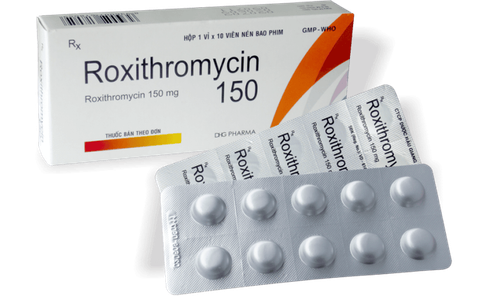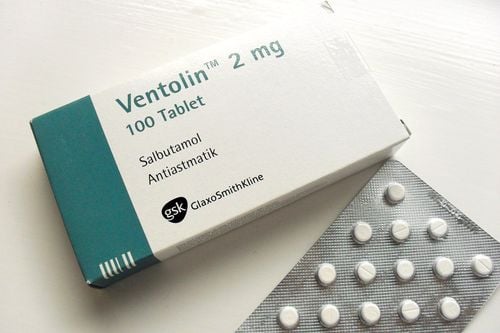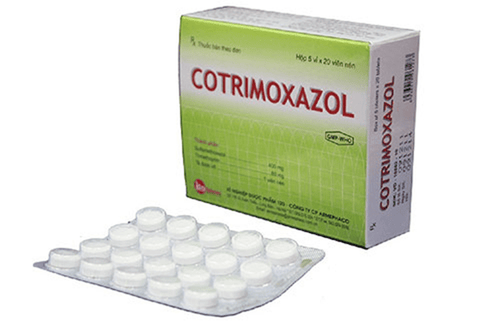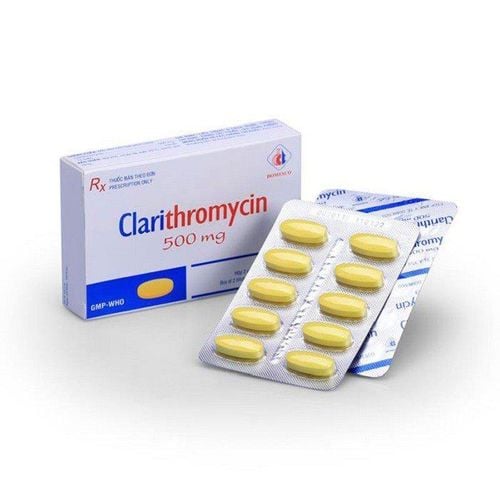Acetylcystein EG 200mg is prescribed as a mucolytic agent and an antidote for paracetamol overdose. So how should Acetylcystein EG 200mg be used correctly and effectively?
1. What are the uses of Acetylcystein EG 200mg?
1.1. What is Acetylcystein EG 200mg?
Acetylcystein EG 200mg belongs to the group of drugs acting on the respiratory system. The main components of the medication include:
- Active ingredient: Acetylcystein, 200mg per sachet.
- Excipients: Aspartame, sugar, Sunset Yellow colorant, vanillin, orange flavor powder, and povidone in sufficient quantities per sachet.
The drug is formulated as granules for oral solution with content 200mg.
Acetylcystein EG 200mg is recommended for use in adults and children aged 2 years and older.
1.2. What are the effects of Acetylcystein EG 200mg?
In respiratory diseases, the body often produces a substance called phlegm, which contains mucus, pus cells, red blood cells, etc. While phlegm is not harmful to health, it can significantly disrupt daily activities, causing discomfort in the throat and sometimes difficulty breathing, eating, or drinking. To alleviate this condition, doctors often prescribe expectorants to counteract excessive mucus production.
Acetylcystein EG 200mg is a mucolytic medication used for patients with excessive phlegm. It works by thinning mucus, facilitating airflow through the lungs.
Acetylcystein EG 200mg is used in the following cases:
- Treatment of respiratory diseases with thick, sticky mucus, such as acute and chronic bronchitis, bronchiectasis, prevention of respiratory infections, bronchial hypersecretion, and emphysema.
- Routine cleaning in tracheostomy procedures.
- Ear, nose, and throat conditions: Treatment of rhinitis, pharyngitis, and sinusitis.
- The drug is also used as an antidote for acetaminophen (paracetamol) overdose.
2. How to use Acetylcystein EG 200mg
2.1. Instructions for use
The medication is administered orally. Dissolve the granules completely in a full glass of water and drink immediately.
The usage of the medication is not dependent on meals.
Do not take it concurrently with antibiotics.
2.2. Dosage
If no specific instructions are provided, the following are the usual recommended doses:
- Adults and children over 7 years old: 200 mg, 2–3 times daily.
- Children aged 2–7 years: 200 mg, twice daily.
- Antidote for the treatment of overdose: Paracetamol.
- Initial dose: 140 mg/kg; follow-up doses: 70 mg/kg every 4 hours, for a total of 17 additional doses.
Acetylcystein is most effective when administered within 8 hours of paracetamol overdose. Effectiveness decreases after this period, but starting treatment up to 24 hours later may still be beneficial.
Handling missed doses
- If a dose is missed, take it as soon as possible.
- If it is almost time for the next dose, skip the missed dose, and continue with the regular dosing schedule.
- Special caution: Do not double the dose to avoid the risk of overdose.
Overdose management:
- Symptoms of overdose: Hypotension, Respiratory depression, Hemolysis, Disseminated intravascular coagulation (DIC), Renal failure, particularly associated with severe hypotension
- Management of Overdose: Immediate treatment of anaphylactic reactions should include subcutaneous injection of adrenaline (0.3 - 0.5 ml of 1/1000 solution), administering 100% oxygen, intubation if necessary, intravenous fluid administration to increase plasma volume, inhaling a beta-adrenergic agonist if bronchospasm occurs, and intravenous injection of 500 mg hydrocortisone or 125 mg methylprednisolone.
3. Contraindications of Acetylcysteine EG 200mg:
Patients who are hypersensitive to the active ingredient or any excipients of Acetylcysteine EG 200mg.
- Patients with a history of asthma.
- Patients with phenylketonuria.
- Children under 2 years old.
4. Precautions when using Acetylcysteine EG 200mg:
Close monitoring is required for patients with a history of asthma or those with a high risk of allergies.
Using Acetylcysteine may cause increased thinning of mucus in the bronchi, and mucus should be suctioned out to reduce coughing.
Caution should be exercised when using Acetylcysteine EG 200mg with:
Tetracycline should be taken at least 2 hours apart from Acetylcysteine EG 200mg. Do not use Acetylcysteine EG 200mg concurrently with antitussive medications, as the two types of drugs may counteract each other and could cause serious mucus blockage due to the mechanism of suppressing the cough reflex. It is recommended to consult a doctor before combining any medications. The active ingredient Acetylcysteine can enhance the vasodilatory effect and inhibit platelet aggregation of nitroglycerin. As Acetylcysteine is a reducing agent, it should not be combined with oxidizing agents.
5. Side Effects of Acetylcysteine EG 200mg:
Very rare: digestive disturbances, tinnitus, stomatitis. Hypersensitivity reactions manifesting as: bronchospasm, rash and itching, angioedema, hypotension, or sometimes hypertension. Other unwanted effects: flushing, nausea and vomiting, fever, sweating, fainting, joint pain, blurred vision, seizures, liver dysfunction, acidosis, respiratory arrest, or more seriously, cardiac arrest.
The information above should not replace medical advice. Therefore, patients should carefully read the instructions before using Acetylcysteine EG 200mg and follow the prescribed directions.
Please dial HOTLINE for more information or register for an appointment HERE. Download MyVinmec app to make appointments faster and to manage your bookings easily.
To arrange an appointment, please call HOTLINE or make your reservation directly HERE. You may also download the MyVinmec app to schedule appointments faster and manage your reservations more conveniently.








